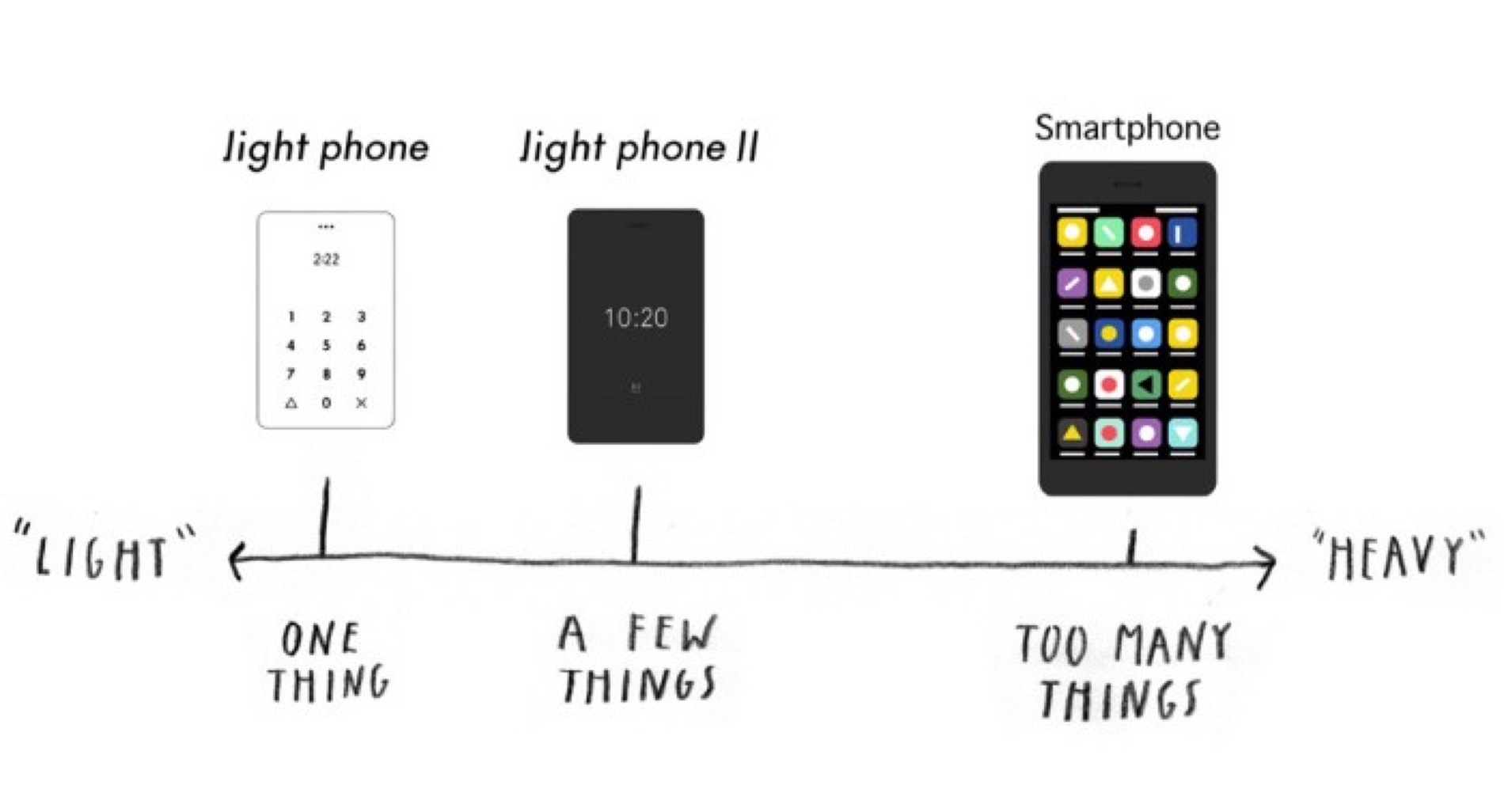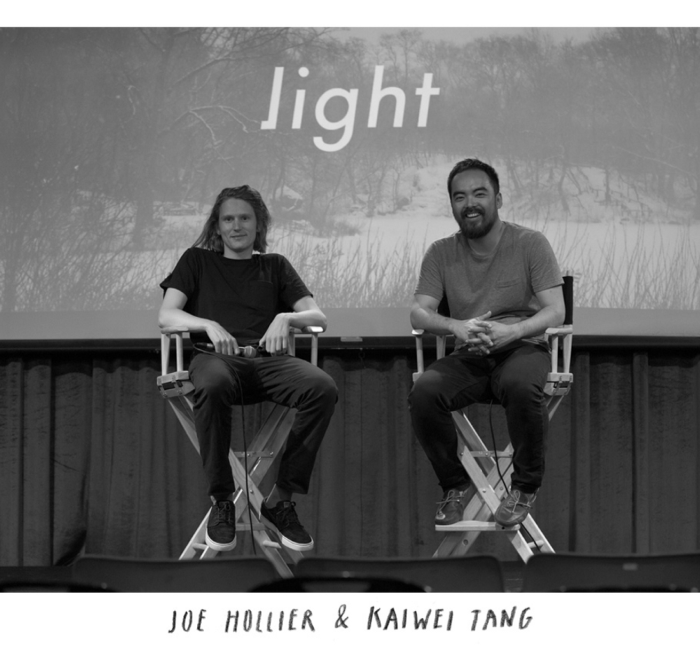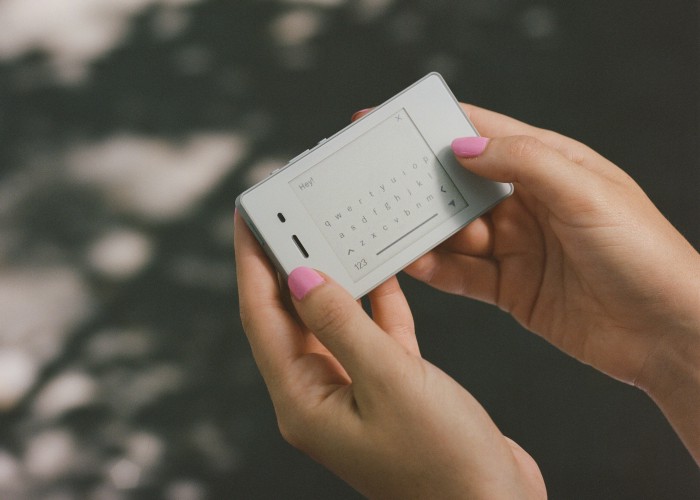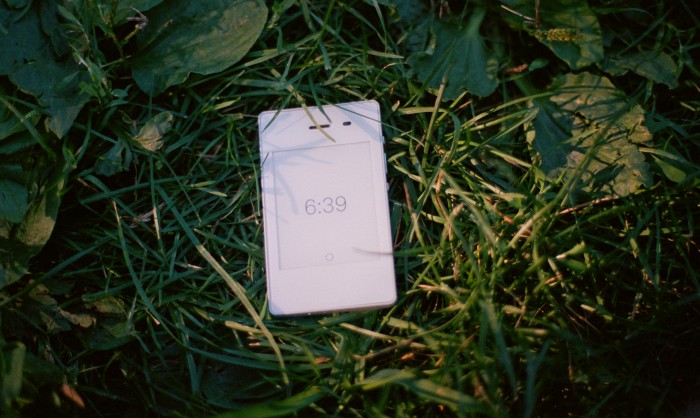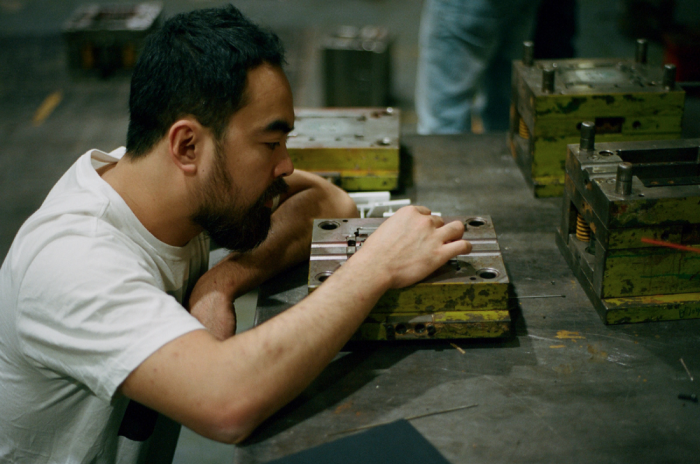Being so accustomed to having the ability to do everything at our fingertips, where’s the balance between participating in this fast-paced world, and taking a step back? How can we appreciate Minimal Tech design? What’s too heavy? And what’s too light?
Design Matters have been following the Light Phone since it first came out in 2016, but since then, much has changed in the world of technology. We touched base with one of the creators of “Light,” product designer, Kaiwei Tang. Looking through the lens of Minimal Tech — one of our themes from last year’s event — we find out how the product is doing four years on, what’s new, and where is it heading? Kaiwei Tang takes us on a journey to explore his philosophy, showing us how going light is not just a product, it’s a lifestyle.
To begin, can you tell us about Light Phone?
The core values of Light Phone grew from my desire to create a device for myself that would depart from smart phones’ manipulative attention-driven business model. I am sick of every app and every social media platform utilising the same model to brag about ‘average user spends two hours on our app every day’ and to measure this as to whether you are successful. Light Phone was a reaction to this trend. When you have a smartphone, everything is shouting at you. The spinning wheels, the advertisement, the colours, the animation.
We decided to create a device that is completely the opposite. It’s just a beautiful tool that does one thing well. Nothing else. It’s similar to a hammer and a screwdriver — you use it and then you put it back. You don’t use it and then swipe for a couple of hours. We are doing that right now — your phone is not a tool anymore, it’s a mini computer.
We aren’t against technology, we aren’t saying that smartphones are bad. What we are saying is that the way technology has developed is disempowering. We give data out unnecessarily and engage in negative news, and that’s why we have this Light Phone design. It is meant to be used as little as possible. It’s never about Light Phone. It’s never about the tool. When you use a tool, it should be invisible.
We agree, the virtual space can be a stressful one, but surely having a ‘mini computer’ is proving useful for people, otherwise smartphones wouldn’t be used by billions of people, globally? Who is your target group? Are the people buying your phone different from this group?
We have three different segments of customers who are interested in what we are offering. The first group is the creative crowd — musicians, designers, artists… They could picture themselves in a position without a smartphone. This is a very foreign thing we are asking — to ask people to go out without the internet for a couple of hours, a day, or even for a couple of weeks. This crowd is able to envisage the benefits.
The second crowd that are drawn to the device as a lifestyle is the professional living in the city, looking for a secondary device for the weekend, for after work, for date night. They use the smartphone all the time — everyday, they can’t get away from emails. We can all get burnt out from that. Those people came to us to experience the Light Phone II as a secondary phone. We all have different shoes and clothes for varying locations. Why can’t we try a different device that isn’t a smartphone?
The last group was initially a surprise to me. I didn’t design the phone for kids, I designed it for adults; however we have schools and parents that are placing orders for their kids, saying this is perfect for them — there’s no app, no social media, it’s black and white. It’s a pleasant surprise for me that parents find Light Phone suitable for their child. The truth is, everyone can go Light and benefit.
We can see older generations of artists favouring this phone, especially those who have the means, but would a parent look to light as the first option for their children? A phone without internet would mean that directions and map services wouldn’t be available. Additionally, it could lead to social isolation. Do you think this is something the phone is lacking or missing?
We actually have a ‘directions’ tool that gives you step-by-step guidance. The original Light Phone from years ago only makes and receives phone calls. It was designed as a secondary phone from your smartphone. We shipped tens of thousands of Light Phones from 2017 and got a lot of feedback saying that they love leaving their smartphone behind but then people would ask if just one more thing to be added. Everyone has these things they need to go light for longer and we want to make their experience of going light better. People don’t want their Light Phone just to be their secondary phone any longer.
That’s why we decided to move forward with Light Phone II in 2019.It’s the same credit card size, paper thin screen but crucially now we have a toolbox. There are some principles for all the tools. First, there are no internet feeds — no social media, no emails, no advertisements. I’m not making any revenues with advertisers. Every action has a clear ending; there’s no unlimited discovering, browsing or searching. You get directions from A to B, it ends. You listen to your playlist, it ends. Text someone, it ends.
Intentionality is something that we value most.
Your time and attention is valuable. People talk about burnout, yet we continue to oversaturate ourselves with screen time. Stress, anxiety, the fear of missing out, as well as data protection privacy issues — can all be associated with social media; those issues are still there, and it’s only going to get worse. We need to separate our digital life and our work life from real life.
Are you planning on adding any other tools to Light?
We have a dashboard on our website that the user can access to drag and drop the tools they desire. That’s it. Our priority right now is designing those tools and making them available. The goal is that if I can offer one more essential tool, make it more usable and draw a couple of million more people, why not?
You mentioned the increase in social media addiction. Your phone goes against this trend. Have there been any negative impacts to Light Phone during quarantine?
Being connected and having time for yourself are not mutually exclusive, you find a balance between your screen time and your real life. We are offering a refreshing option. This is a tool that helps keep distractions away, within you will find tools that get jobs done faster, not things that are designed to suck away your attention.
I don’t see Light Phone as the solution for the smartphone addiction problem — this is not a magic pill. Addiction doesn’t work that way. This is not something you can say you use and then it is gone. This is the first step. With Light Phone, all temptation is removed. There’s no easy way out. There’s no pulling out your phone and swiping and getting out of uncomfortable scenarios. There’s no way to escape reality, what are you going to do? The question we want to ask is: What’s important to you — what are you going to do?
In order to have “minimal tech” devices, inevitably you accumulate more objects. We see that it could be complicated ‘going light’ because in fact, you are adding another device to your life. Are there any other disadvantages and limitations that you are planning to overcome?
It’s not a $10 device, it is $350, so naturally our audience is in a position to spend. I want the price to be cheaper but as a small company, it was just the reality we are facing — you have to start somewhere and pick your battles. I can’t offer a $10 device that has customised software and hardware. As individuals, we have spent thousands on smartphones. What if we can have the option to just go light? It’s not a steep price to pay for mental and social well being.
What were your reasons behind choosing the E-Ink screen for your product?
Everything we do circles back to why we do it. We want the device to be invisible. It obviously needs to be designed well, but that’s not the focus. It shouldn’t be shiny. That’s why I love it. It’s subtle, it’s lowkey. It’s just quietly in the background, almost invisible. It also consumes less battery — you can use your Light Phone for two days with full charge.
Also, our keyboard is different. You cannot fly through using your keyboard, so a lot of our users feel that they have to slow down and that process actually helps just being precise. You’re not typing a mini-novel! We are encouraging being conscious about the words we use. It also encourages people to just call, so they are talking to people more. It’s an interesting side-effect.
At Design Matters, three of us wear glasses. The idea of not having blue light constantly shining in our faces is something that seems very appealing. However, being used to getting things done quickly and efficiently, it would feel alien to re-wire our pace of life through having to physically slow down when using a phone. Maybe this isn’t such a bad thing after all.
But will this product continue to sell? Will it take off in the future? It’s a sort of “fun game”, but is it a realistic scenario for the future? Design Matters will keep looking at this product and see how it does.


